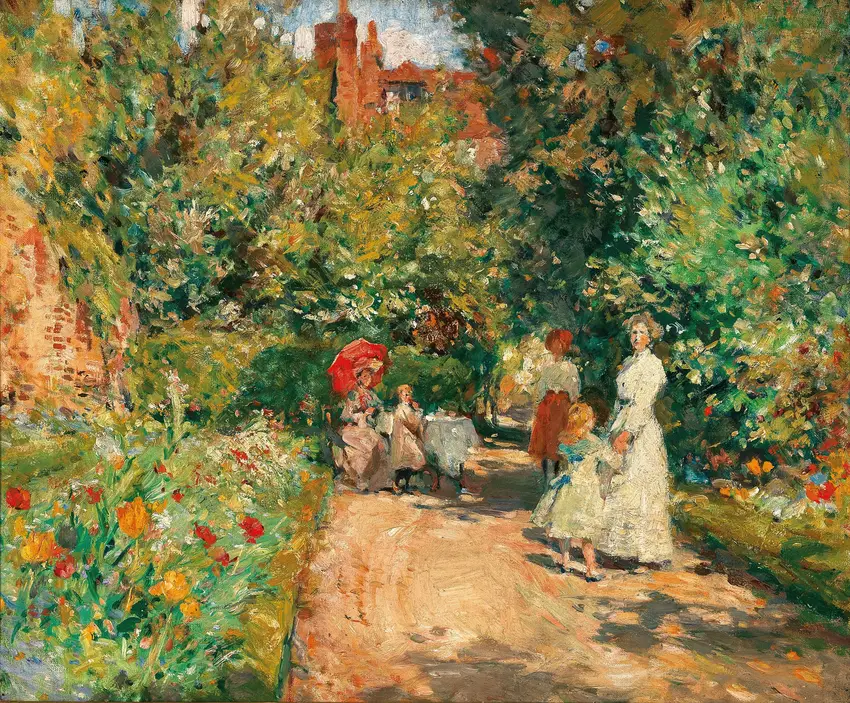William Christian Symons
William Christian Symons (1862–1949), English, A painter of quiet yet evocative landscapes and intimate interiors, this British artist captured the subtle interplay of light and atmosphere with a restrained, almost poetic sensibility. Though not a radical innovator, his work reflects the lingering influence of Impressionism, softened by a distinctly English reserve. His palette often leaned toward muted earth tones and delicate blues, with brushwork that could shift from precise detail to loose, suggestive strokes—particularly in his later years.
Symons found inspiration in the rural and coastal landscapes of Cornwall, where the shifting moods of sky and sea lent themselves to his contemplative approach. Unlike his more celebrated contemporaries, he avoided grand gestures or overt drama, favoring instead quiet corners of the world: a sunlit doorway, a still-life of modest objects, or a stretch of shoreline at dusk. There’s an understated emotional weight to his compositions, as if each scene held a private significance just beyond the viewer’s grasp.
Exhibiting regularly at the Royal Academy, he maintained a steady, if unspectacular, career. Today, his work is held in regional collections rather than dominating major museums—a fitting legacy for an artist who seemed more interested in sincerity than spectacle. His paintings reward close looking, revealing a subtle mastery of tone and a quiet devotion to the beauty of the everyday.
Symons found inspiration in the rural and coastal landscapes of Cornwall, where the shifting moods of sky and sea lent themselves to his contemplative approach. Unlike his more celebrated contemporaries, he avoided grand gestures or overt drama, favoring instead quiet corners of the world: a sunlit doorway, a still-life of modest objects, or a stretch of shoreline at dusk. There’s an understated emotional weight to his compositions, as if each scene held a private significance just beyond the viewer’s grasp.
Exhibiting regularly at the Royal Academy, he maintained a steady, if unspectacular, career. Today, his work is held in regional collections rather than dominating major museums—a fitting legacy for an artist who seemed more interested in sincerity than spectacle. His paintings reward close looking, revealing a subtle mastery of tone and a quiet devotion to the beauty of the everyday.
-

Teatime in a Walled Garden
William Christian Symons (English, 1862–1949)A sunlit garden teems with life, where a forgotten teacup hints at quiet moments shared among blossoms and stone.